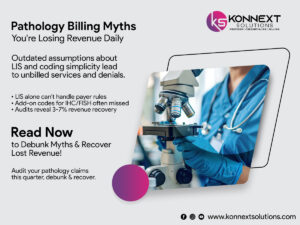The Centers for Medicare & Medicaid Services (CMS) has finalized its payment updates for Medicare Advantage (MA) and Part D plans for 2026—and the numbers are significant. With an overall 5.06% increase in MA payments, representing more than $25 billion in additional funding, CMS signals both a financial boost and a strategic pivot toward deeper reform across the Medicare ecosystem.
This adjustment stems from recent data and feedback collected through the end of 2024 and marks a shift toward stronger risk adjustment, enhanced beneficiary protections, and structural modernization across drug pricing and access programs.
What’s Changing in 2026?
A Larger-Than-Expected Payment Increase
Originally projected at a modest 2.23%, the final MA payment hike nearly doubles that estimate. Key contributors to the finalized 5.06% growth include:
- Effective Growth Rate:Jumped from 5.93% to 04% in the final rule.
- Rebasing and Repricing Impact:-0.28%
- Star Ratings Adjustments:-0.69%
- Risk Adjustment and FFS Normalization:-3.01%
What’s not included? The projected 2.10% increase in coding intensity, which many MA plans may realize as a net revenue uptick depending on their documentation and risk capture performance.
Risk Adjustment Model: Now Fully Implemented
CMS’s multi-year rollout of the 2024 CMS-HCC risk adjustment model officially concludes in 2026:
- 100% of MA risk scoreswill now rely on the updated model.
- Linear regressionremains the chosen method for Fee-for-Service normalization.
- PACE organizationswill follow a transitional approach, using a 90/10 blend of the older 2017 model and the new 2024 model to ease into encounter-based reporting.
This shift is designed to modernize how risk is assessed, ensuring more accurate compensation tied to real-world patient complexity.
Spotlight: Puerto Rico Adjustments
Recognizing unique care dynamics and economic pressures in Puerto Rico, CMS has built in tailored rate protections, including:
- Rates based on FFS beneficiaries with both Part A and Bcoverage
- Adjustments for zero-claim populations
- Ongoing evaluation of regional methodologies
This aligns with CMS’s efforts to improve equity and reimbursement parity across U.S. territories.
Major IRA Changes: Redesigning Part D
2026 is a landmark year for the Inflation Reduction Act (IRA) and its sweeping changes to Part D:
- Catastrophic Coverage Gets a Cap
- $2,100 out-of-pocket limit, after which beneficiaries pay nothing
- A game-changer for high drug cost patients
- Insulin Price Protection
- Capped at $35/month or 25% of negotiated price
- A continuation of affordability reforms introduced in prior years
- Adult Vaccine Cost Elimination
- No more cost-sharing for ACIP-recommended adult vaccines
- Promotes prevention without financial barriers
- New Programs for Affordability
- Medicare Prescription Payment Planand Selected Drug Subsidy Program debut, targeting long-term drug affordability and subsidy improvements.
Part D Risk Adjustment: Overhauled for 2026
With the IRA overhaul comes an updated risk adjustment model for Part D plans. The changes include:
- Updated data sets: 2022 diagnoses paired with 2023 spending data
- Inclusion of negotiated price effectsfrom the Drug Pricing Reform
- Adjustments for Manufacturer Discount Programs
- Continued use of linear regressionfor normalization metrics
These changes aim to ensure sponsors are adequately compensated based on new plan structures, even as coverage shifts toward cost-saving, capped models.
Evolving Star Ratings: Quality Still Matters
The Star Ratings system continues its evolution in 2026 with:
- Finalization of disaster adjustment eligibility
- Updates to Part C & D improvement metrics
- Refined Categorical Adjustment Indexto better reflect social risk factors
- Non-substantive technical specification updates
CMS is already exploring future refinements tied to clinical outcomes, patient experience, and equity measures—leaving room for future stakeholder input.
Stakeholder Impact: What This Means for You
For MA Plans:
The higher-than-expected payment increase allows for greater flexibility in benefit design and network management, but plans must reassess how the completed risk model affects their books and future bid strategy.
For Part D Sponsors:
With major changes to catastrophic coverage, drug negotiations, and insulin pricing, financial modeling and formulary planning must evolve quickly. There’s also an opportunity to differentiate plans based on new beneficiary protections.
For Providers:
MA reimbursement may increase, depending on contracts, but more importantly, utilization trends may shift as patients experience lower out-of-pocket costs for medications and preventive care.
For Beneficiaries:
These changes promise more predictable and affordable drug costs, especially for those with chronic conditions or high Rx usage. This includes capped insulin costs, no-cost vaccines, and clear out-of-pocket maximums.
Final Thoughts: A Defining Shift for Medicare
The 2026 CMS Rate Announcement goes beyond numbers—it lays the groundwork for a more sustainable, transparent, and patient-centered Medicare.
With historically high MA payment growth, full transition to modernized risk models, and the long-awaited implementation of IRA reforms, this update carries major implications for virtually every healthcare stakeholder.
Organizations that prepare now—through accurate risk documentation, strategic benefit redesign, and tight compliance—will not only adapt but thrive in this evolving Medicare landscape.
Now is the time to realign operations, revisit provider contracts, and educate beneficiaries. The system is changing—those who move with it will be ready for what’s next.




